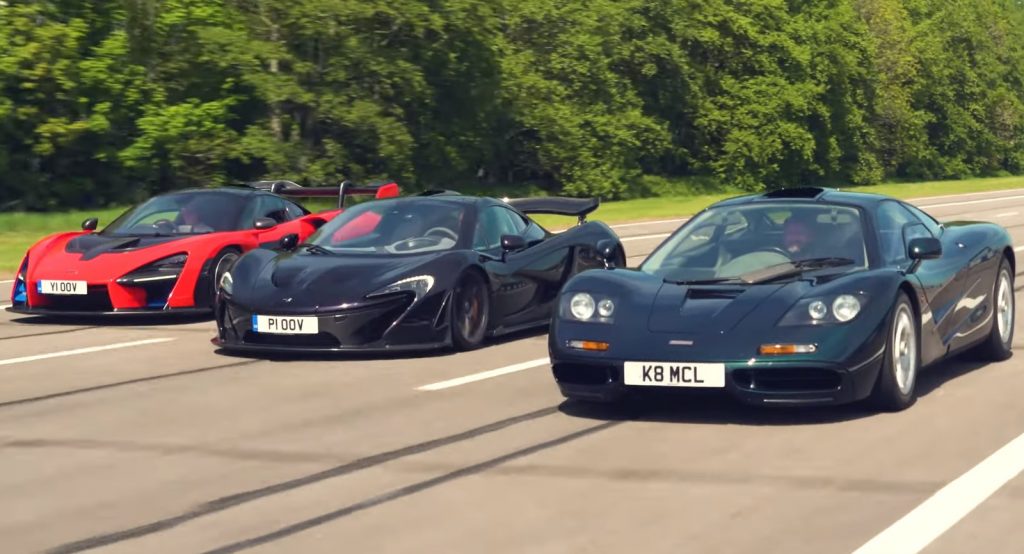It’s not everyday that you see a McLaren F1 clearing its melodic throat, let alone being together with its successors, namely the P1 and Senna, McLaren’s Ultimate Series models.
Autocar was able to gather the three special supercars to commemorate the 25th anniversary of the McLaren F1’s historic road test; back then, McLaren would allow only one set of performance numbers to be extracted from their XP5 prototype F1 and Autocar was tasked with the job.
Also Read: The World’s Best McLaren F1 Is Going To Bring All The Money
No one really knew how fast Gordon Murray’s creation would turn up to be and no one was really prepared.
0-60mph in 3.2 sec, 0-100mph in 6.3 and the quarter mile in 11.045 at 138mph (222km/h); these are very impressive numbers in today’s market but back in 1994 they turned the world upside down. XP5 is also the same car that achieved 240.1 mph (386.7km/h), making it the fastest production car in the world for many years -it’s still holds the record for the fastest naturally aspirated car ever made.
The fact that the McLaren F1 was never meant to be the fastest on a straight line further adds to its myth, as this is arguably one of the most perfect executions of a supercar. It was simply ‘super’ in everything.
The BMW-sourced 6.1-liter V12 produced 627 HP and 479lb-ft (649Nm) of torque and can rev up to 7,500rpm, producing at the same time one of the most evocative soundtracks even today.
Sure, the newer cars are faster and more capable around the bends, with the P1 being the first Macca to use electric assistance and the Senna looking like something you shouldn’t be able to put plates on.
In a way, McLaren will never achieve to build a car so ahead of its time like the F1. But deep inside, we hope we are wrong.




